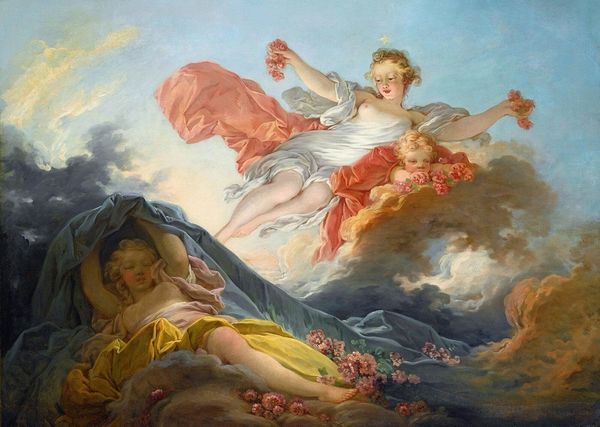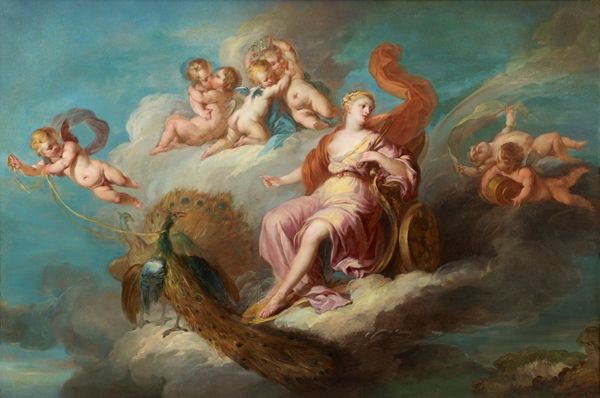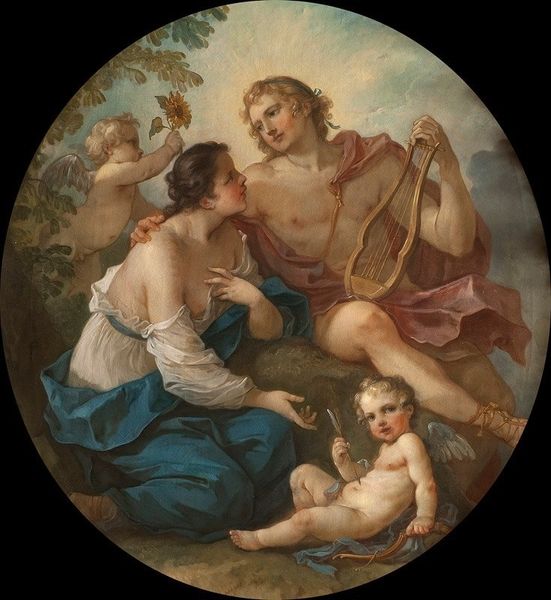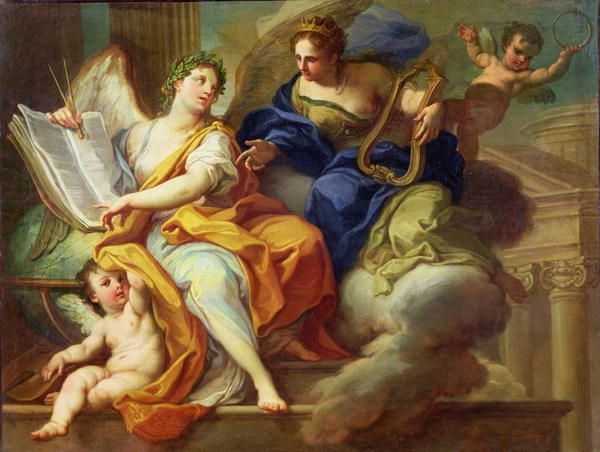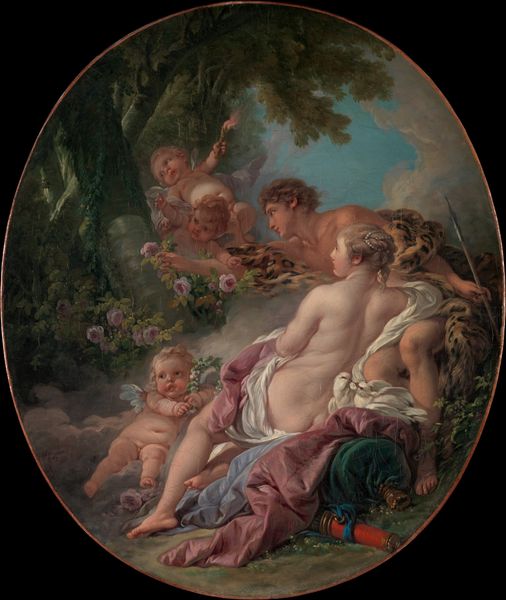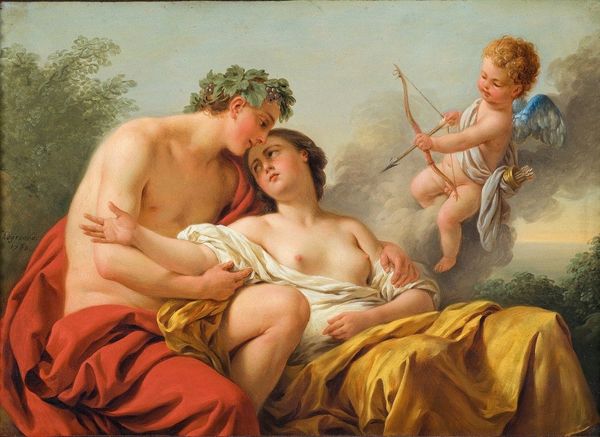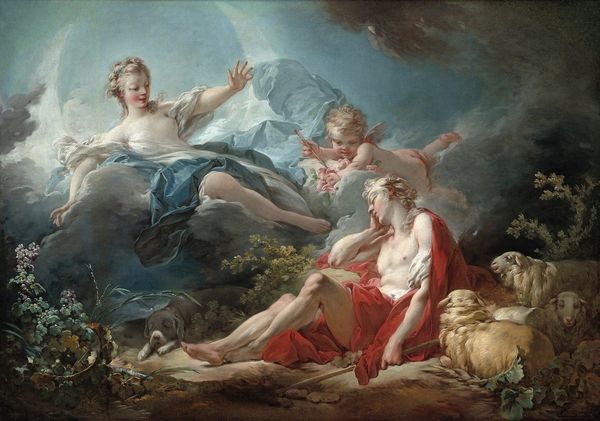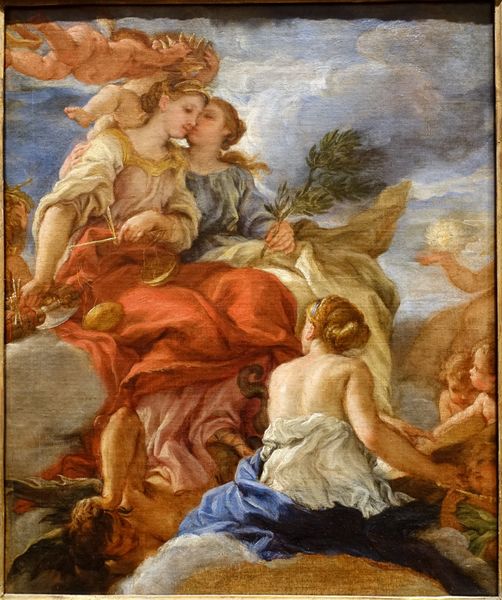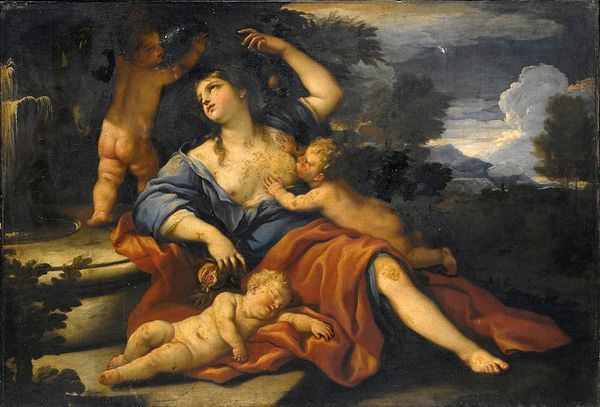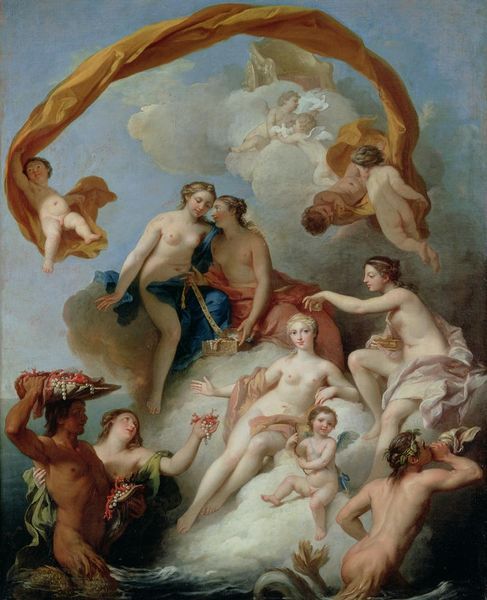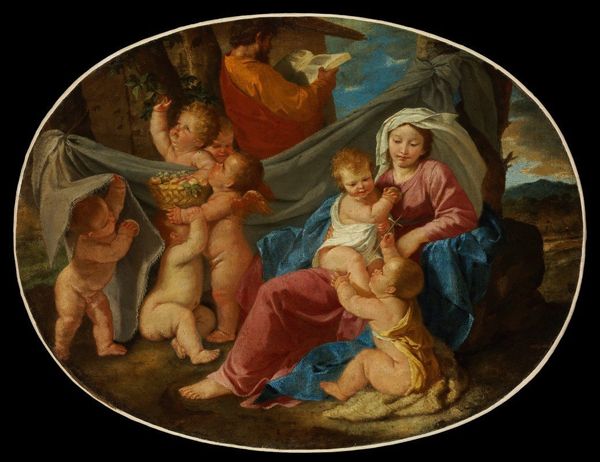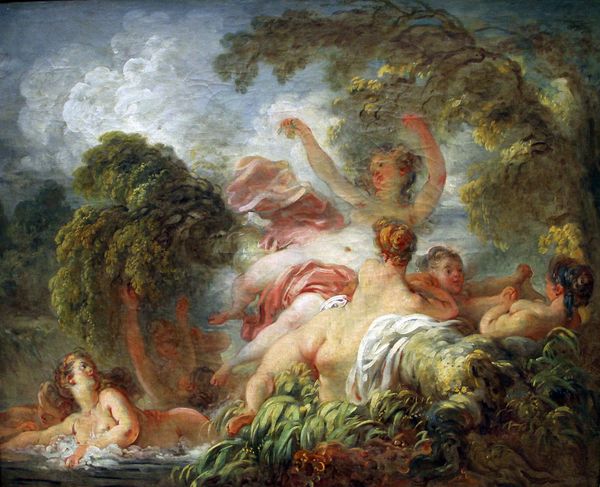
painting, oil-paint
#
allegory
#
painting
#
oil-paint
#
oil painting
#
roman-mythology
#
cupid
#
mythology
#
nude
#
rococo
Copyright: Public domain
Editor: Here we have François Boucher’s *Birth of Venus* from 1750, created using oil paint. It feels so…dreamlike, almost fluffy! What stands out to you about this piece? Curator: I immediately think of the production of Rococo art in the 18th century, closely linked to aristocratic patronage and consumer culture. Consider the use of oil paint itself—a luxurious material that allowed for such delicate, almost porcelain-like skin tones. It was a marker of status. How do you think the consumption of such images shaped social ideals around beauty? Editor: I hadn’t really considered the cost of materials themselves. So, these soft, idealized bodies... are they actually commenting on consumption somehow? Curator: In a way, yes. Rococo's emphasis on ornamentation and pleasure reflects a society increasingly driven by material goods. The pastel palette itself, achieved through specific pigment combinations, required resources and skilled labor. Can we view this piece as a commodity fetish, where the true cost of production is masked by its alluring surface? Editor: I suppose it's easy to get swept up in the image and forget about the painter's workshop, the sourcing of pigments, even the system of patronage that supported Boucher! It's more than just a pretty picture. Curator: Exactly! It invites us to question the labor behind its creation and the cultural values it promotes through its visual language. This connection to manufacture and commodity culture makes this artwork very insightful. Editor: I’ll definitely look at paintings differently now, considering their material origins. Thanks for helping me see this painting through a fresh, socioeconomic lens! Curator: It was my pleasure, these observations should assist us to explore these art objects in their complete forms.
Comments
No comments
Be the first to comment and join the conversation on the ultimate creative platform.
